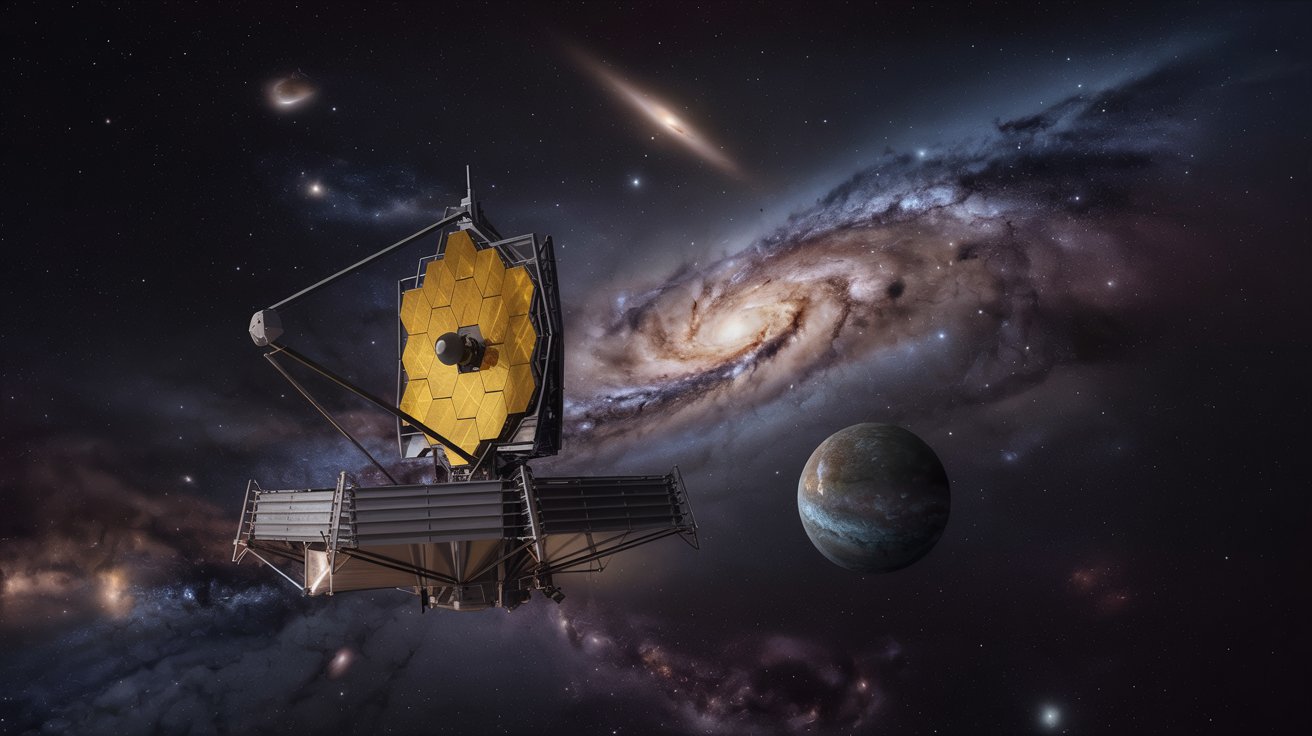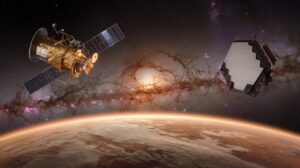NASA’s James Webb Space Telescope Discovers Most Distant Known Galaxy: A Revolutionary Step in Understanding the Universe’s Origins
NASA’s James Webb Space Telescope (JWST) has made an extraordinary breakthrough in our understanding of the cosmos by identifying the most distant known galaxy to date. This discovery, JADES-GS-z14-0, located 13.5 billion light-years away, offers a remarkable glimpse into the early universe—approximately 290 million years after the Big Bang. Let’s explore what this discovery means, how it was made, and what it could tell us about the formation of galaxies in the universe.
1. Unveiling a Galaxy at the Edge of Time
JWST has detected JADES-GS-z14-0, a galaxy that formed just 290 million years after the Big Bang. This discovery is significant because it provides an unprecedented look into the universe’s infancy, at a time when galaxies were just beginning to take shape. The JWST uses its advanced infrared technology to look back in time, capturing light from some of the earliest galaxies that existed.
- Key Takeaways:
- JWST’s ability to detect extremely distant objects helps us peer into the past of the universe.
- The galaxy was formed in the very early stages of the cosmos, just 290 million years post-Big Bang, offering a rare glimpse of the universe as it was in its early stages.
Table: Timeline of Key Cosmic Events (Time from the Big Bang)
| Event | Time After Big Bang | Significance |
|---|---|---|
| Formation of First Stars | 200 million years | Birth of the first light sources |
| Formation of First Galaxies | 300 million years | Early structures in the universe |
| Discovery of JADES-GS-z14-0 | 290 million years | New insights into galaxy formation |
2. Implications for Cosmic Evolution
The discovery of JADES-GS-z14-0 brings forward new questions about the formation and evolution of galaxies. The galaxy is surprisingly large and bright, suggesting that early galaxies may have formed more quickly and under different conditions than previously thought. This could alter how scientists view the speed at which the universe’s structures developed.
- Key Takeaways:
- The discovery challenges existing models of galaxy formation, as JADES-GS-z14-0 is brighter and larger than expected for a galaxy at this early stage.
- It raises questions about whether the early universe was more complex and dynamic than we had imagined.
3. NASA’s JWST and the Future of Cosmic Exploration
The JWST is a game-changer in space exploration. Its infrared technology allows scientists to observe the farthest reaches of the universe, detecting light from galaxies formed at the very beginning. JWST’s discoveries are expected to shed new light on topics such as the formation of stars, black holes, and the development of large-scale structures in the universe.
- Key Takeaways:
- JWST is the most advanced tool ever created for studying the universe’s early history.
- With each new discovery, JWST provides more data to refine our understanding of cosmic evolution.
4. Conclusion: A New Era of Cosmic Discovery
JWST’s discovery of JADES-GS-z14-0 marks a pivotal moment in space science. This finding not only pushes the boundaries of our knowledge about the early universe but also opens up new avenues for future research. As JWST continues its mission, it will uncover more galaxies from the early universe, transforming how we understand the cosmos.
- Key Takeaways:
- JWST is providing valuable insights into the formation of galaxies, stars, and other cosmic phenomena.
- The discovery of JADES-GS-z14-0 demonstrates the importance of studying the early universe to fully understand cosmic history.
Key Takeaways of JWST’s Discovery
| Discovery | Key Impact |
|---|---|
| JWST’s Detection of JADES-GS-z14-0 | Revolutionizes understanding of early galaxies |
| JWST’s Role in Cosmic Exploration | Refines models of galaxy formation |
| Continued Research Opportunities | More early universe data will be gathered |





